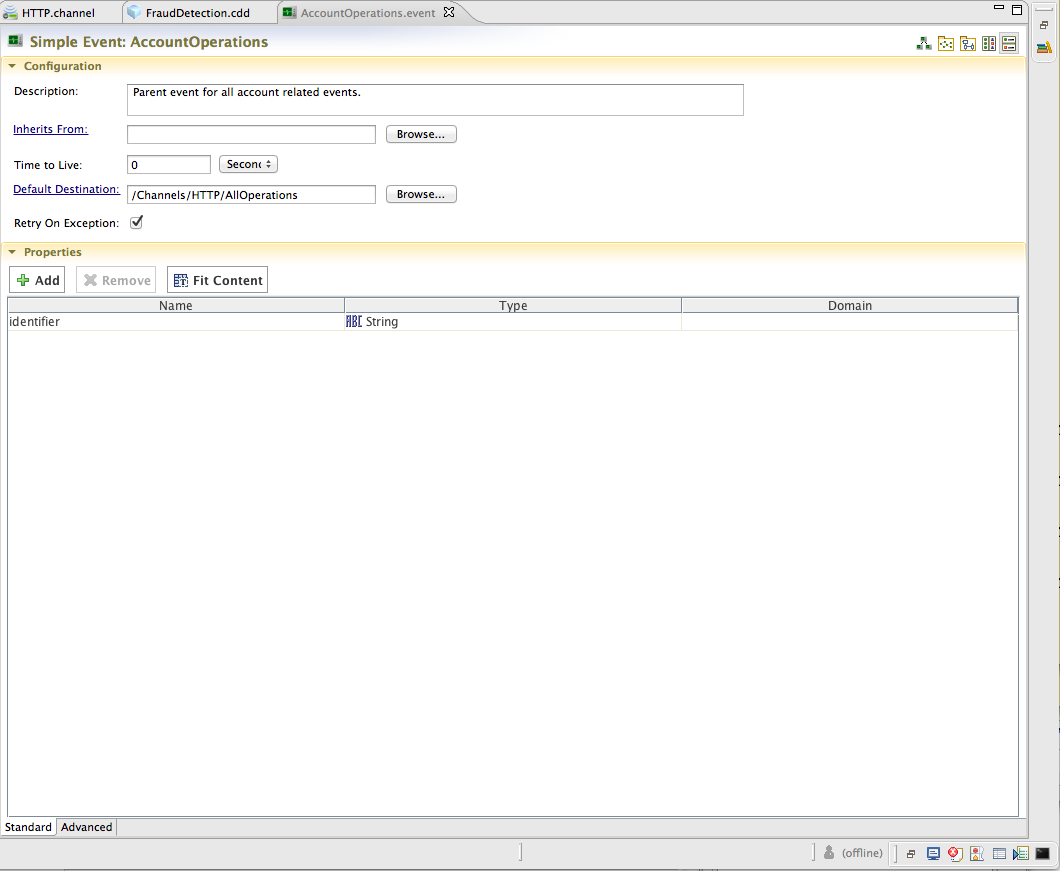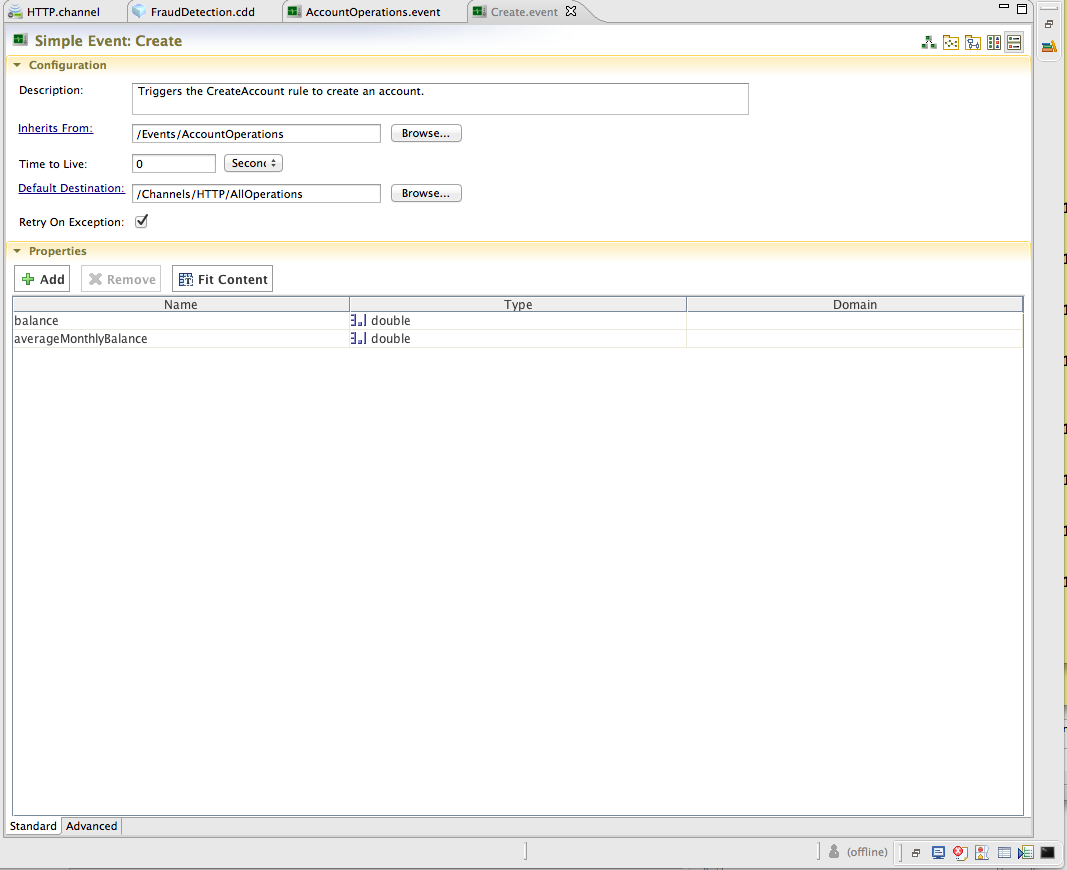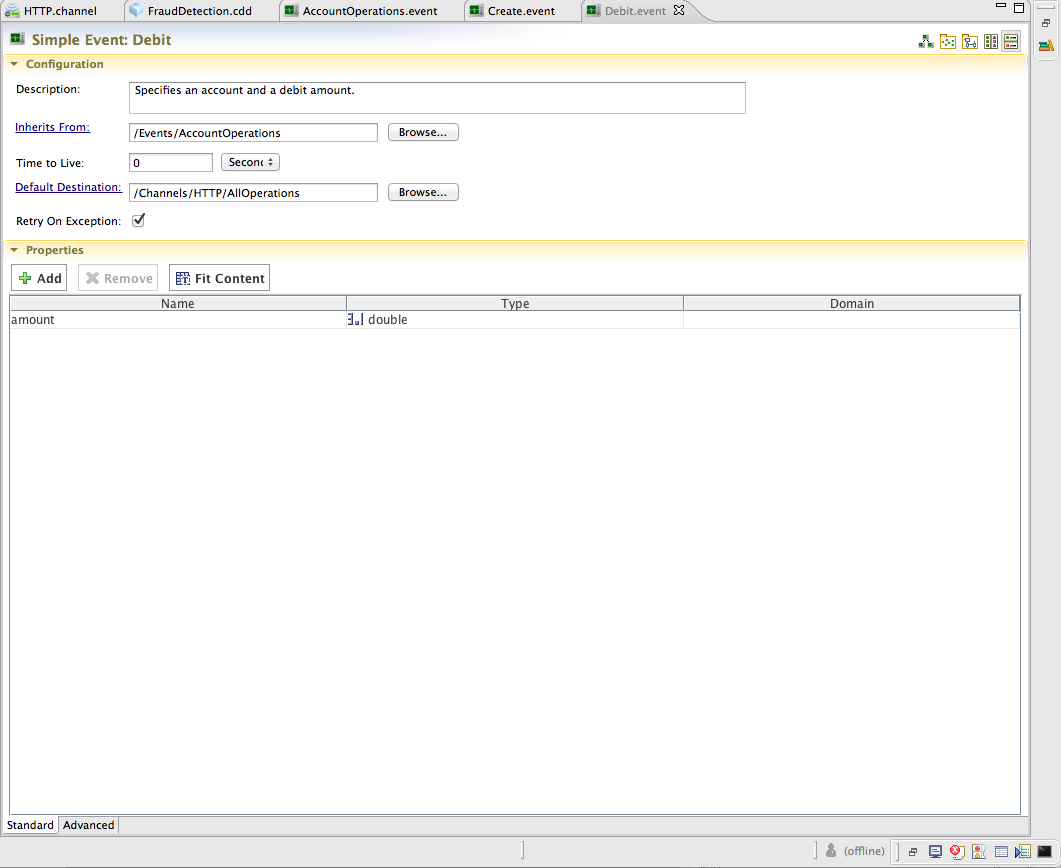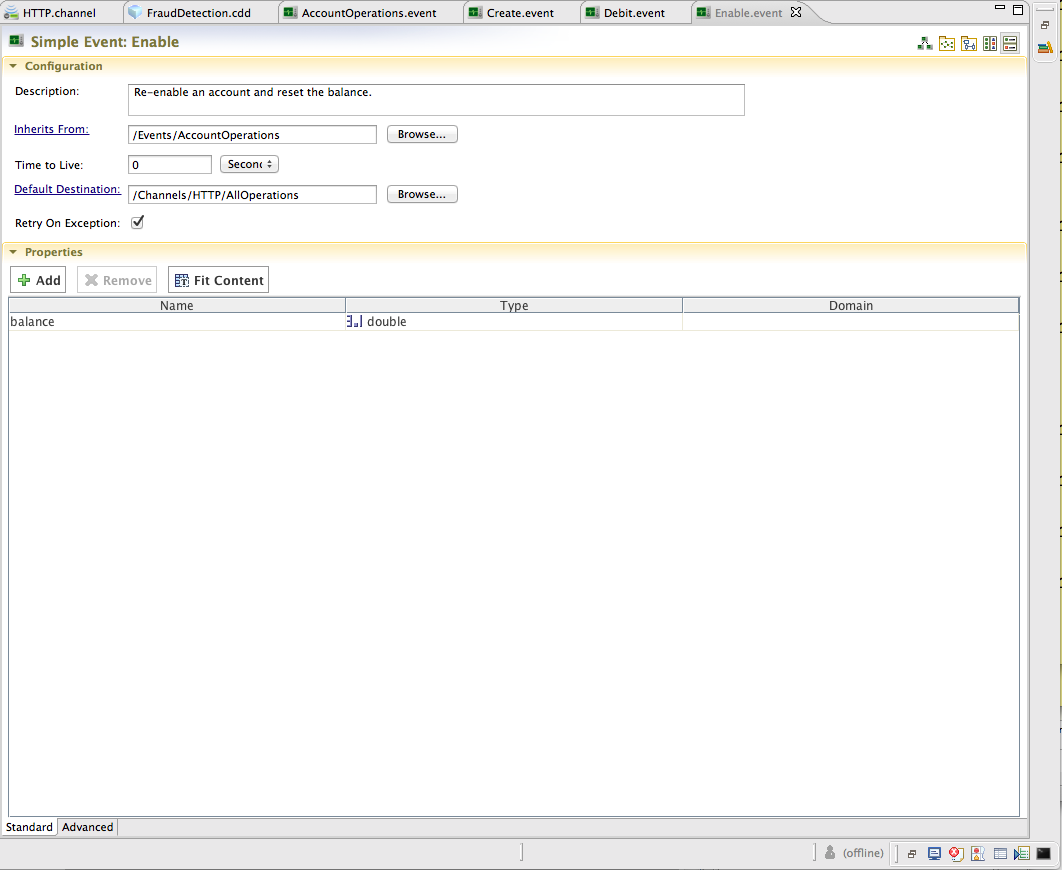In this task, you begin to build the project ontology by defining some events — or strictly speaking, event types. Before you define event types in a real-world project, you first examine the incoming and outgoing messages, as well as messages that you want to occur within the application, and configure each event type’s characteristics accordingly. You can use inheritance (as demonstrated here) to simplify configuration.
TIBCO BusinessEvents® Extreme provides various kinds of events. Simple events are used in this tutorial to bring messages into the application. In addition you can use SOAP events, time events and advisory events, which you can learn about in the product documentation.
What is an event? The term event is overloaded: it means an activity that happens, and the definition of an object that represents the activity in TIBCO BusinessEvents® Extreme (an event type), and an instance of that event type definition.
How are events (event instances) created? Simple event types are created at design time. Event instances are generally created using data in incoming messages. When a destination receives a message, it creates an event to hold the information from the message. Events from channels are automatically asserted into the Rete network, where their presence generally triggers rules (if all rule conditions are met).
Simple events can also be created by rules and rule functions. Events created this way are not asserted automatically because they could be intended for use as outbound events, to be sent to a destination. You must explicitly assert such internally created events as needed.
What is an event payload? Just as messages have properties and a message body, events can have properties and payloads. The payload is optional. It is used to hold more complex data, for example, SOAP messages.)
What is a default destination? Outbound events of the same event type are often sent to the same destination. To simplify the process of sending those events, you can specify a default destination in the event type.
What is a default event? The default event configured for a destination is used to hold information transferred from an incoming message, when no event type is specified in the message.
See Default Destinations and Default Events in TIBCO BusinessEvents® Extreme Application Architect’s Guide for more details.
Why do the events have a warning sign? Just as destinations generally have default events, events generally have default destinations. The warning is to alert you to the fact that an event has no default destination. In this case, however, no events are sent out through channels so no default is required.
Rules that apply to a parent type also apply
to its child types Concept and event types use inheritance in a
similar way to Java classes. Because rules that apply to a parent type
also apply to its child types, it is generally not advisable to create
many levels of inheritance. However it can be a useful technique. In this
tutorial the AccountOperations event is the parent of
the Create, Debit, and
Enable events. You’ll see why in a later
section.
![[Note]](images/note.png) | |
See Channels and Events in TIBCO BusinessEvents® Extreme Application Architect’s Guide for overview and conceptual information. See Simple Events, Time Events, and Scheduler Functions, and Advisory Events in TIBCO BusinessEvents® Extreme Application Developer’s Guide for implementation details. |
This event is a parent to events that are used in the
project. It has one property: identifier. All its
child events inherit this property, and extend the parent by adding
more.
Right click the
Eventsfolder, and selectNew > Simple Event.You see the New Simple Event Wizard. In the Simple Event Name field, type
AccountOperations. In the Description field, typeParent event for all account related events. ClickFinish.In the Default Destination field, click the browse button and in the Select Destination dialog, select
FraudDetection/Channels/HTTP.channel/AllOperations. Click OK.You see the Simple Event Editor. In the Properties section, click the
Addbutton. Click in the cell underNameand type the nameidentifier.This property is a
Stringproperty, andStringis the default type.
Save and close the resource.
For example purposes, the information needed to create an
account is an identifier, a balance, and a monthly average balance (for
the fraud detection calculation). The identifier
property is inherited from the AccountOperations
event.
Right click the
Eventsfolder, and selectNew > Simple Event.In the New Simple Event Wizard Filename field, type
Create. In the Description field, typeTriggers the CreateAccount rule to create an account. Click.In the Simple Event Editor Inherits From field, click . In the upper section of the event picker, select the
Simple Eventevent type, and in the lower section browse to and select theAccountOperationsevent. Click OK. TheAccountOperationsevent is now the parent event for theCreateone.In the Default Destination field, click the browse button and in the Select Destination dialog, select
FraudDetection/Channels/HTTP.channel/AllOperations. Click OK.In the
Propertiessection, add two properties:balance, of typedoubleaverageMonthlyBalance, of typedouble
Save and close the resource.
![[Tip]](images/tip.png) | |
In any editor, you can click any label that is underlined (such as Inherits From in the Event editor) to open the resource selected for that setting. |
Following the procedure above, add the
Debit event with the values in Table 2.1, “Debit Event”.
Table 2.1. Debit Event
| Field | Value |
|---|---|
| Name | Debit |
| Description | Specifies an account and a debit amount. |
| Inherits From | AccountOperations |
| Default Destination | /Channels/HTTP.channel/AllOperations |
| Properties | amount (double) |
The Debit event should look like this when it
is complete.

Following the procedure above, add the
Enable event with the values in Table 2.2, “Enable Event”.
Table 2.2. Enable Event
| Field | Value |
|---|---|
| Name | Enable |
| Description | Re-enable an account and reset the balance. |
| Inherits From | AccountOperations |
| Default Destination | /Channels/HTTP.channel/AllOperations |
| Properties | balance (double) |
The Enable event should look like this when it
is complete.
